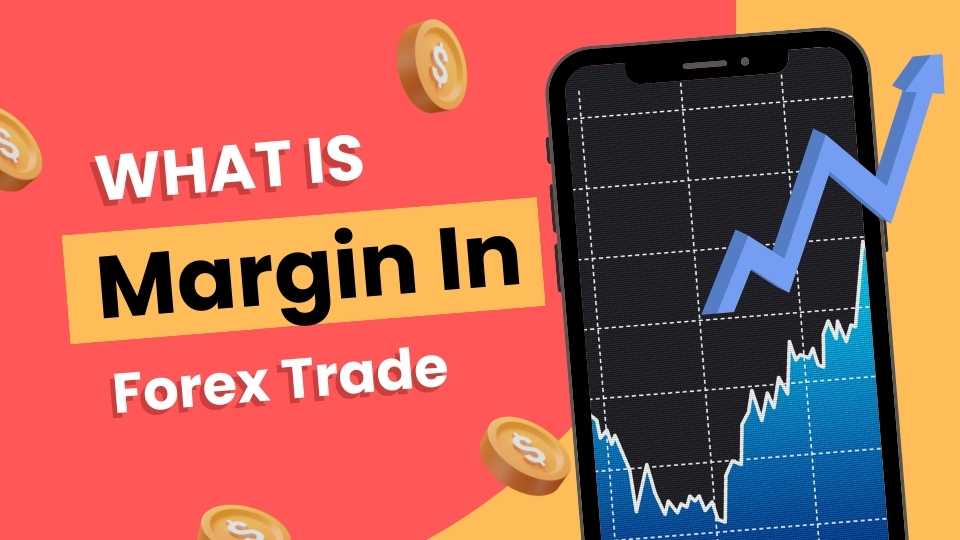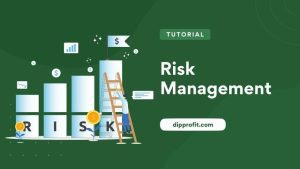
What is Margin in Forex Trade? How Does it Work?
Before we delve into what margin in forex trading means, we should go over the meaning of forex trading. Forex trading or Foreign Exchange trading is the process of buying and selling different currencies in the market. The currency market remains open 24×7 and is one of the most liquid markets in the world.
Its popularity lies in the possibility of earning big profits in the short term. One of the strategies used in Forex trading is margin trading, which involves borrowing capital to trade assets. In this article, we will discuss the concept of margin, its role in forex trading, and why traders use it.
What is Margin?
Margin is often defined as the amount of money required to be available in your account to open a position on a specific trade and trade with borrowed funds. It is also known as the deposit made by the trader with a brokerage firm in other to trade with borrowed funds. We can therefore define margin trading in layman’s terms as the act of using borrowed funds or brokers’ funds to trade financial assets with the aim of magnifying profits.
Margin trade allows the trader to make a significant ROI or Return on Investment without having to invest a substantial amount of capital. An example of margin trading can be opening a position of $10,000, while only investing $1000. In this case, the broker lends the trader $9,000, which is the margin.
Margin is different from leverage, although the two terms are often used interchangeably. Leverage is the ratio of the amount of capital contributed by the trader and the borrowed amount. For example, if the leverage is 10:1, the trader contributes $1000, and the broker contributes $9000. It is said the trader has leveraged their account. From this illustration, we can say that the margin is $1000 and the leverage is 10:1, which means the broker the trader used helped magnified the margin 10 times.
How Margin Works
Margin trading enables traders to trade larger positions than they would otherwise be able to trade with their own funds. Traders use margins to gain leverage and make big profits when the prices of assets go up. However, it can also be risky if prices move against the trader. In such situations, margin trading can magnify losses and result in the trader losing more than their initial investment. In worse cases, losses can exceed the trader’s account balance, resulting in a margin call.
Let’s use some examples to further explain how margin works
Example 1
A trader buys 1000 shares of company ABC at $10 per share, which costs $10,000. The trader has only $5000 in their trading account, which means they can only buy 500 shares. However, the trader believes that the share price will rise in a few days, so they decide to use margin trading to buy the remaining 500 shares.
With a margin requirement of 50%, the trader uses $5000 of their funds and borrows the remaining $5000 from their broker. The broker charges interest on the borrowed funds. A few days later, the share price hits $11 per share, and the trader sells all the shares. The trader makes a profit of $1000 ($11 – $10) * 1000, excluding the broker fees and interest.
From this example, we can identify that the leverage here is 2:1.
Example 2
Another trader wants to sell short 1000 shares of company XYZ which is trading at $20 per share. As they expect the share price to fall, they open the position with a margin requirement of 50%. The trader borrows 500 shares from their broker, which remain in their account, and sells them at $20 per share for $10,000.
A few days later, the share price falls to $15 per share, and the trader decides to buy 1000 shares to close their position. The trader spends $7500 to buy back the shares ($15 per share), returns the borrowed stock to their broker, and makes a profit of $2500 ($10,000 – $7500).
As interesting and attractive as margin trading might look, we should be aware that it’s like a double-edged sword, just as it can help the trader make more profit, it can also make the trader lose their funds way faster than normal which would then lead to a margin call.
What is a Margin Call?
A margin call occurs when the account value falls below the required minimum. Brokers require a trader to maintain a specific percentage of the margin to hold the position. Generally, the minimum margin requirement is different for different assets and brokers. When a margin call occurs, the broker closes the trade partially or completely to protect the trader and the business from further losses.
See Also: Common Terms in Forex: Spread, Pip, Lot size and Leverage
Why do Traders use Margin in Forex Trading?
Margin trading is a popular strategy for forex trading for several reasons. Some of the reasons why traders use margins include:
-
Leverage
Margin trading allows traders to leverage their position and trade a more significant amount of assets than they could with their initial capital. Leverage enables traders to profit from small price movements of assets that they would not usually have access to without margins. Thus, even if the asset’s value goes up by a small percentage, the trader can earn significant profits.
-
Flexibility
Margin trading provides flexibility in trading. It allows traders to use their capital more effectively and even benefit through hedging, where traders can keep different positions simultaneously to lessen their losses.
-
Short-term Trading Opportunities
Margin trading also allows individuals to open and close a higher number of trades. As the Forex market remains open 24×7, margin trading enables traders to take advantage of short-term trading opportunities like opening multiple trades at once, closing trades partially, or leveraged trading to quickly capitalize on market movements.
-
Capital Preservation
Margin trading is an excellent way to preserve capital. It magnifies profits when the market moves the traders’ way and controls potential losses by way of stop-loss orders in the event the market behaves unpredictably. Thus, it can help traders preserve their capital, even in unfavorable market conditions.
Margin Trading Strategies
As I said earlier, trading in forex markets using margin trading needs to be strategically managed as it can magnify losses and result in significant losses and margin calls. Therefore, traders should have a solid understanding of margin requirements while using different margin trading strategies. Here are some popular ways to master margin trading and reduce massive losses while carrying out your trades:
-
Stop Loss
Stop-loss orders are very effective in managing risk in margin trading. They enable traders to exit a trade when the market goes the other way to protect their equity, indicating the price point where traders want to exit a losing trade.
-
Diversification
Diversification of assets is essential when trading in forex markets using margin trading. Traders can either diversify their portfolios by trading in multiple currency pairs, stocks, bonds, or other financial instruments, et cetera, across different categories of assets to achieve balance in trading positions. That way, if one position loses, the other positions may still make sufficient gains to avoid significant losses.
-
Risk Management
Margin trading in forex markets requires traders to be disciplined in managing risk. It involves being cautious and only investing a small portion of the capital in margin trading to capitalize on the desired returns. Traders must develop, apply, and re-evaluate their trading plans regularly.
-
Demo Trading
Demo trading is a simulation using virtual money in a live trading environment. Traders develop and practice their margin trading strategies without risking actual financial loss. They learn about price fluctuations and analyze their profit and loss portfolio in a risk-free manner before transitioning to actual margin trading using their real account with real-life financial resources. Demo trading can help the trader master the art of margin trading, knowing the proper strategies to use in avoiding massive losses.
Conclusion
Margin trading is an effective strategy for forex traders to magnify their profits. However, it also involves significant risks that require traders to be well-informed, disciplined and to manage their financial portfolios appropriately. Traders use margin trading to leverage their positions and capitalize on short-term trading strategies.
Margin trading offers flexibility, capital preservation, and quick profit opportunities. The use of stop losses, diversification, effective risk management, and demo trading are popular margin trading strategies that traders use to their benefit. Forex traders must understand the risks of margin trading and use it sensibly to reap the benefits of successful trading.
In summary, margin trading in forex can be a beneficial strategy for traders looking for short-term opportunities to maximize their profits while managing risks.


